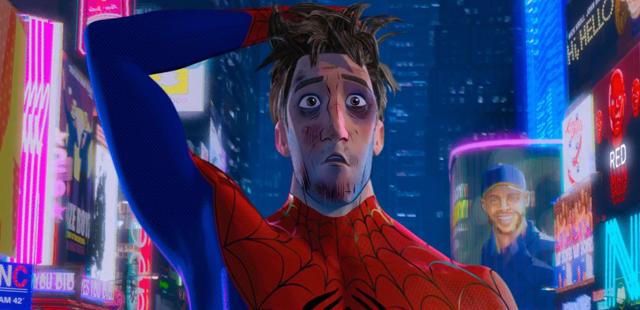If you click on a link and make a purchase we may receive a small commission. Read our editorial policy.
The best Post-Apocalyptic Comics: From nuclear fallout to gender-centric genocide, comics love to end the world in big ways
Y: The Last Man, Kamandi, Judge Dredd and more show up on our list of the best dystopian comic book stories

Popverse's top stories
- Is the Supergirl teaser trailer already teasing a Man of Tomorrow connection? Because our Brainiac senses are tingling
- Watch now: Watch as Nickelodeon presents the Avatar: The Last Airbender 20th Anniversary Panel, featuring Dante Basco, Zach Tyler Eisen, Jack De Sena, Mae Whitman, Michaela Jill Murphy, from NYCC 2025
- The Amazing Digital Circus stars Lizzie Freeman, Michael Kovach, and Alex Rochon are coming to Seattle's ECCC 2026
When you think about it, the end of the world almost feels like it’s low-stakes when it comes to comic book storytelling; almost since their inception, superheroes have been facing that potential outcome on a monthly basis, and have moved on to far greater concerns: The end of multiple worlds! The end of the multiverse! The end of all of reality itself!
Thankfully, comics still have a lot of time for post-apocalyptic fiction, and no shortage of skill in telling those kinds of stories. Even putting aside genre classics like Days of Future Past — the post-apocalyptic flash-forward that arguably rewrote superhero comics — comics have produced some of the finest, more enjoyable takes on the post-apocalypse that have ever been created, and done so in ways that make other media feel tired, grounded, and lifeless in comparison. (Although, when it comes to dystopian futures, perhaps that’s somewhat appropriate…)
Kamandi, the Last Boy on Earth (1972-1978)

Anecdotally inspired by Planet of the Apes, Jack Kirby’s final grand creation for DC is part-Saturday Morning Cartoon, part-classic sci-fi action-adventure story in the tradition of Flash Gordon, and a story that makes the Planet of the Apes franchise look unimaginative in comparison, as one of the last humans alive has to contend with a world filled with anthropomorphic animals ruling the world in broad satirical swipes of the society of the era. Breathlessly, perpetually moving forward with excitement and no small amount of joy, it’s that rarest of things: a post-apocalyptic storyline that fans were probably very excited to be part of themselves.
Judge Dredd: The Cursed Earth (1978)

Sure, technically all of Judge Dredd’s storylines count as post-apocalyptic, given that the series’ canon includes ‘The Atomic Wars,’ an event that decimated most of the world and necessitated the creation of the Mega-Cities in the first place. But none are as successfully post-apocalyptic as The Cursed Earth, in which Dredd and crew have to road trip across the irradiated wasteland that used to be… well, basically most of the United States in order to deliver the cure to a deadly disease. Along the way, they run into mutants, dinosaurs, robots, and basically every single pulp threat that can be imagined in a gloriously over-the-top adventure that drives even the traditionally unflappable Dredd himself to the brink of exhaustion.
Akira (1982-1990)

Is it fair to say that Katsuhiro Otomo’s manga might be the pre-eminent post-apocalyptic science fiction story in comic? Perhaps; certainly, it’s one of the most influential and recognizable, with Shotaro Kaneda and others trying to control the telepathic (and not entirely healthy) Tetsuo Shima from using his powers to awaken the eponymous Akira… an act that might have devastating effects on Neo-Tokyo should it happen. It’s stylish, non-stop, and utterly irresistible as it careens towards a climax that feels as if the backstory — which involves the destruction of Tokyo and resulting world war! — seem as if it wasn’t trying hard enough. Truly, more comics should try to be this ambitious.
The Last American (1990-1991)

A little-known classic from the early 1990s, The Last American is what happens when three veterans of 2000 AD’s Judge Dredd — including John Wagner, the character’s co-creator — take on propaganda, the Cold War, and the fear of an atomic winter that permeated the 1980s. It’s darkly comedic, deeply tragic, and something very much all its own despite the pedigree of those involved: think of it as a strange flip side of Alan Moore and Dave Gibbons’ Watchmen in a very strange way — sans super-powered individuals, of course, and with a better sense of humor — and you’re not entirely on the wrong track.
Y: The Last Man (2002-2008)

Brian K. Vaughan and Pia Guerra’s dystopia comes from one seemingly inexplicable detail — the death of everything in the world with a Y chromosome — and builds from there, exploring the long-term effects of a world that hasn’t ended per se, but has undergone enormous changes. It’s one of the finest examples of world building from its era, which might seem counter-intuitive (after all, the world in question is unmistakably falling apart) but allows creators and readers alike the chance to fully comprehend just what it means to survive in almost impossible circumstances… and, for that matter, what it takes to have hope when all evidence points to its absence all-round.
Letter to Survivors (2019)

Originally publishing in 1982 at the height of nuclear paranoia —and later reissued in 2019 with a new translation — Letter to Survivors is a wonderfully strange, funny, and bleak take on what happens after the end of the world, as a hazmat-suit-wearing mailman travels a blasted, atomic-blast-burned landscape to continue his job. But when it comes to one family living underground and desperate for human contact and new experiences, the best he can do is read letters aloud and hope the message gets to where it’s going. But.. what is the message, when it comes down to it…? (To say more would be to spoil things and this is definitely a book that should be experienced for yourself.)
Furiosa: A Mad Max Saga is in theaters now - if you got confused (or haven't got there yet), we have a guide to all the big questions with that ending. Get more with articles on Furiosa's new ride, an itinerary on how (and where) to watch all the Mad Max movies in chronological or release order, and the Mad Max movies' entire timeline explained.
Follow Popverse for upcoming event coverage and news
Find out how we conduct our review by reading our review policy
Let Popverse be your tour guide through the wilderness of pop culture
Sign in and let us help you find your new favorite thing.
















Comments
Want to join the discussion? Please activate your account first.
Visit Reedpop ID if you need to resend the confirmation email.